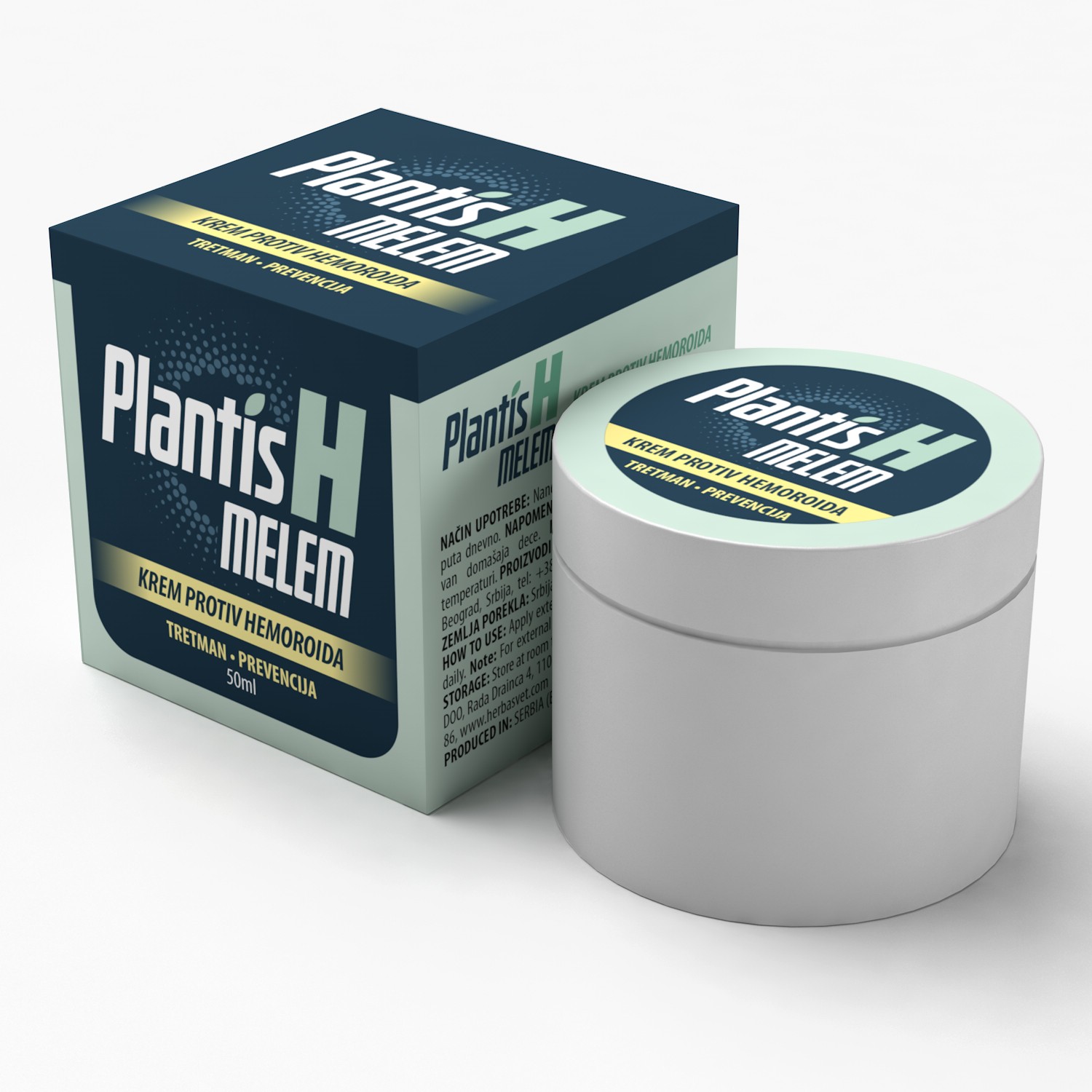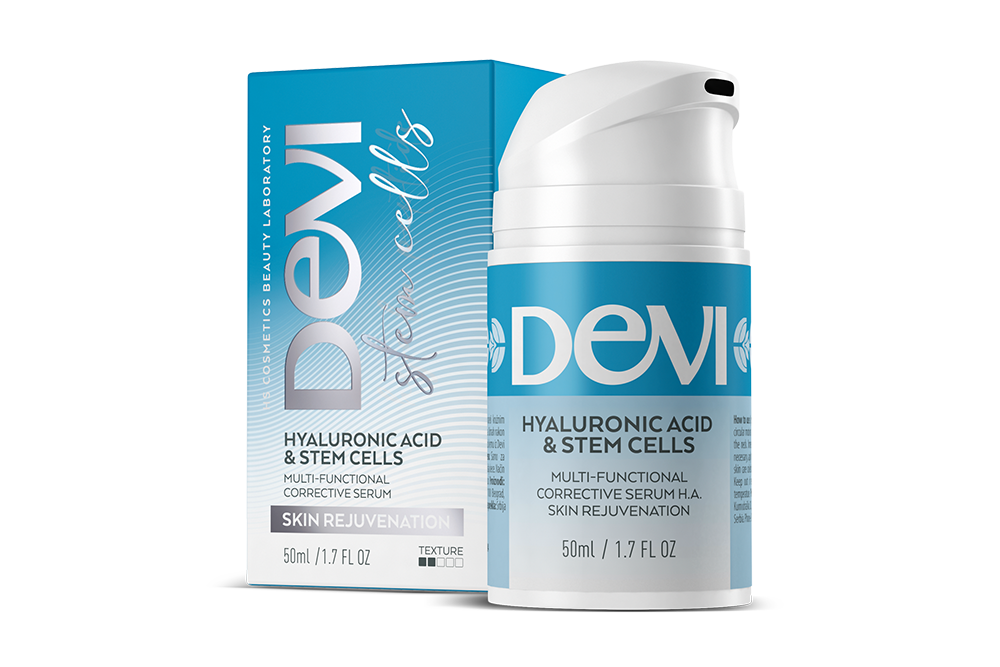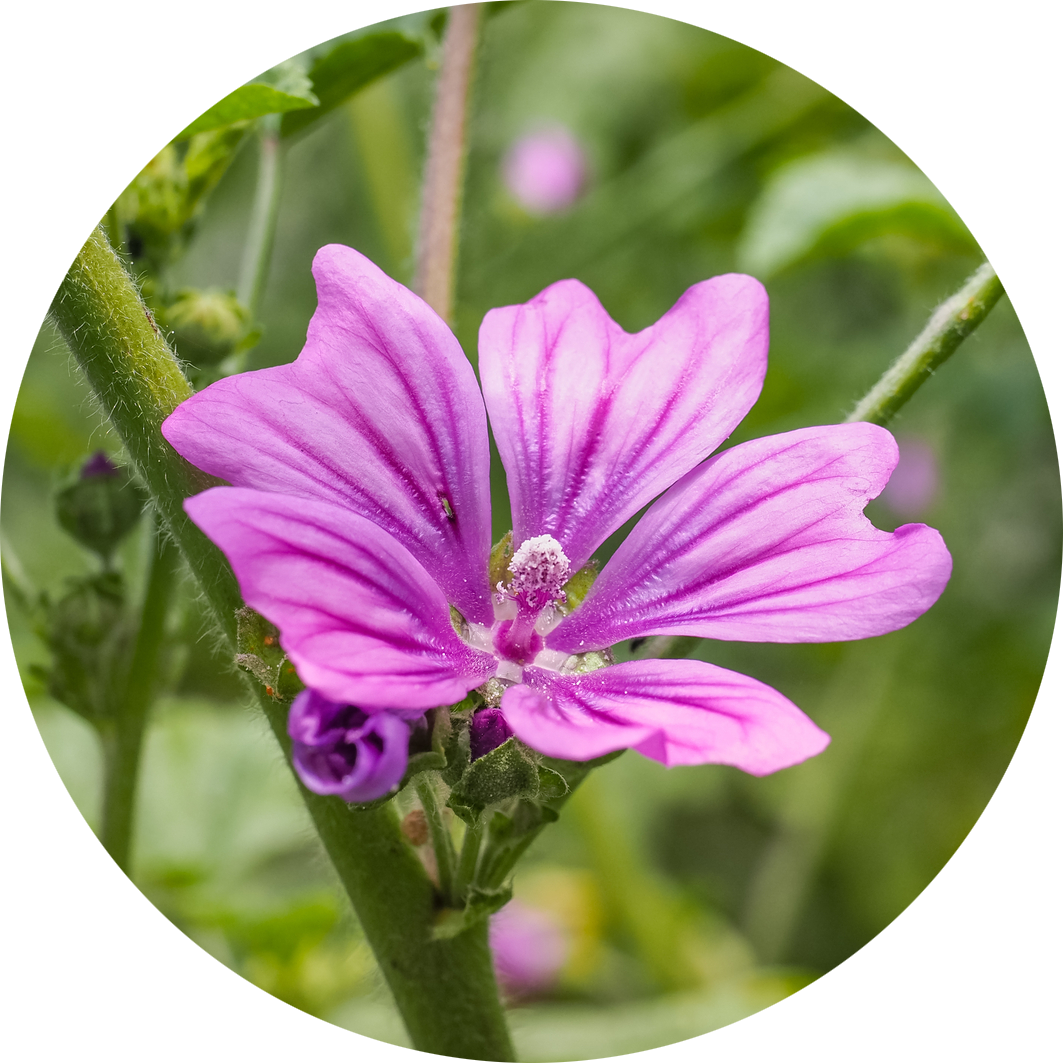(Malva silvestris)
The Malvaceae genus, known in the English-speaking world as mallow, contains over 2,000 species. Marsh mallow and common mallow are the most famous members of this plant family; throughout the Mediterranean belt there are related species that are traditionally used in the diet, such as jute mallow plant used in the famous Egyptian mulykhiyah, also known as “Egyptian spinach”, from which an extremely tasty and healthy soup is prepared.
Another type of mallow – wild mallow – which is mentioned in the Bible, became a great hero of the siege of Jerusalem in 1948. After the United Nations Assembly decided to implement a plan to divide Palestine into Arab and Jewish states and the City of Jerusalem in 1947, indignant Arab forces besieged Jerusalem. In March of the following year, the population under siege began to run out of food. A great famine was prevented by a hardy plant that grew everywhere – in cracks in sidewalks, walls, abandoned plots and fields. Its deep root provides it with enough moisture even during a dry period, and all parts of the plant – leaves, flower, fruit and the stem – are edible. In memory of the plant which reached the kitchen in the absence of basic foodstuffs by the force of circumstances, Independence Day in Jerusalem is celebrated every year with the traditional khubez soup – a meal that saved the city. As far as Egyptian mulukhiyah is concerned, this name means “royal”, i.e. a plant worthy of kings and it has been present since the time of the pharaohs. Mallow reaches even further into the past: archeological finds of human fossils from Syria confirm the presence of common mallow, Malva silvestris, in dental calcification dating back to 3000 BC; it was certainly present for more than 6000 years in Europe, where it was discovered in Lower Saxony.
COMMON MALLOW, EDIBLE AND MEDICINAL
How did mallow, this seemingly inconspicuous plant, prevent great famine and ruin? It did so in the same way as it has been doing in traditional medicine for thousands of years. The whole plant is very healthy: it is rich in vitamins – A, B, C and E; minerals – potassium, calcium, iron, magnesium, zinc and selenium – and is a real treasure trove of fibre and inulin.
The medicinal properties of the plant come primarily from plant mucilage, and then from tannins, anthocyanins, flavonols and heteroside flavones. This perennial herbaceous plant grows as a weed up to a metre and a half in height, in villages, along paths and roads and often takes root along fences, abandoned buildings and ruins. The whole plant is medicinal – from its fleshy, long root, heart-shaped leaves with a long stalk to the little pretty flowers; its leaves and flowers are most commonly used. In order to use the full potential of its mucilage, the plant is immersed in cold water, left to soak overnight and then warmed up gradually. It has always been used in folk medicine for disorders affecting the stomach, intestines and the respiratory tract and to treat inflammation; modern scientific research has proven its exceptional anti-inflammatory, antimicrobial, antioxidant, regenerative, hepatoprotective, antiulcerogenic and anticancer properties.
FIGHT AGAINST FREE RADICALS
Common mallow is a powerful antioxidant thanks to a high content of phenols and flavonoids, as well as vitamins C and E; recent studies have compared its effects to medication currently used to treat diseases caused by COVID 19. Moreover, common mallow leaf extract has also shown a potent cytotoxic effect and it may prevent or serve as additional treatment for cancer.
It is the plant mucilage that is of great help for respiratory problems. It coats mucous membranes and soothes irritated airways, thus soothing cough, hoarseness, sore throat and tonsillitis. Common mallow has been shown to be effective in bronchitis, pneumonia, chronic obstructive pulmonary disease and even emphysema. In India, the seat of Ayurvedic medicine, common mallow is regularly prescribed for colds and shortness of breath.
COMMON MALLOW FOR WOUNDS AND INFLAMMATION
Common mallow has multiple effects on wounds, ulcerative and damaged skin and mucous membranes: in addition to shrinking wounds and accelerating their healing, its plant collagen enhances the ability of wound edges to coalesce and heal. The European Medicines Agency mentions not only the use of mallow in the treatment and healing of wounds and inflammation, as an analgesic, but also its ability to fight a wide range of bacteria: Aggregatibacter actinomycetemcomitans, Fusobacterium nucleatum, Prevotella intermedia and Porphyromonas gingivalis. In addition to bacteria, common mallow is also an enemy of fungi – it is effective for bacteria Escherichia coli, Staphylococcus aureus, Enterococcus faecalis, Streptococcus agalactiae, as well as fungi Candida kefyr, Candida albicans, Aspergillus niger and Sclerotinia sclerotiorum. Studies have confirmed that its effect is comparable to that shown by erythromycin, gentamicin and amphotericin.
Mallow has also been shown to be very effective in atopic dermatitis, when treatment with corticosteroids and antihistamines becomes ineffective. As there are no side effects, it is also safe for delicate baby skin. This medicinal plant also has a strong anti-inflammatory effect, mostly thanks to the malvidin 3-glucoside, which is present regardless of whether it is applied topically or orally. Therefore, in addition to skin inflammation, it is extremely effective for inflammation of the mucous membranes of the digestive tract and ulcerative colitis; some studies claim that aqueous solution of common mallow has a better effect than cimetidine, a drug used for heartburn and peptic ulcer – ulcers of the stomach and duodenum.
The anti-inflammatory properties of common mallow, its power to regenerate the skin and alleviate irritations make it an ideal ingredient of a balm for inflammed haemorrhoids – Plantis H balm. In synergistic action with other extremely effective plants, common mallow extract helps reduce inflammation and swelling in haemorrhoids and heal mucous membranes that may burst and bleed, while itching, pain and irritation disappear.
There are many reasons to take advantage of everything that common mallow has to offer. If nothing else, we can always make Jerusalem khubez soup with it: wash approximately half a kilo of common mallow leaves, cut into strips; heat a tablespoon of olive oil in a pot, briefly fry one finely chopped onion and a few crushed garlic cloves, then add common mallow leaves and stir until wilted; add about eight glasses of water (or in the “enriched” version – add chicken or beef broth), add salt and pepper when it boils and simmer for another 20 minutes. Pour the soup into a plate and season with lemon juice. Poor food is always the tastiest and healthiest, especially when it contains a “royal” plant.








